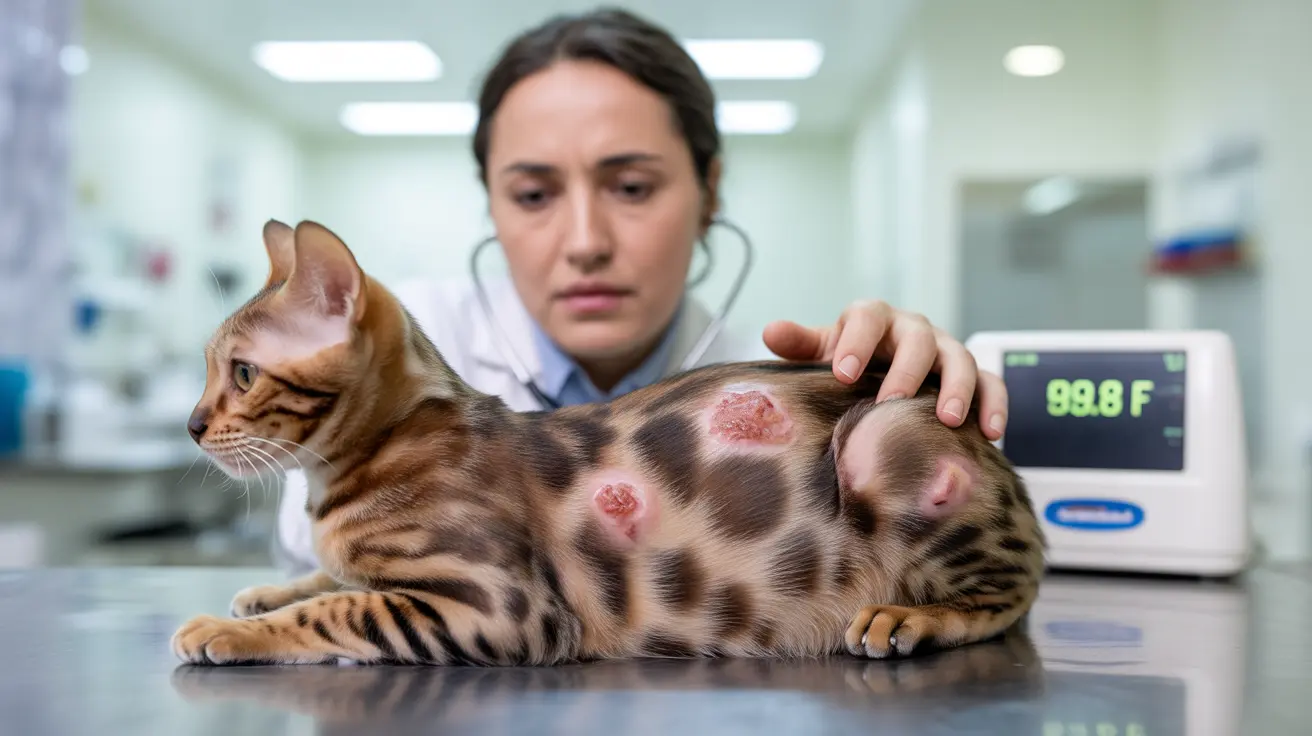Cat skin ulcers can be a concerning health issue for pet owners, presenting as open sores or lesions that require prompt attention. These wounds can appear anywhere on your cat's body and often indicate an underlying health condition that needs professional veterinary care.
In this comprehensive guide, we'll explore the various causes of cat skin ulcers, how to identify them, and the most effective treatment approaches. Understanding these aspects is crucial for ensuring your feline companion receives proper care and treatment when needed.
Common Causes of Cat Skin Ulcers
Infections and Parasites
Bacterial, fungal, and viral infections are frequent culprits behind cat skin ulcers. Bacterial infections often develop secondary to wounds or allergies, while fungal infections like ringworm can cause hair loss and small ulcers, particularly affecting the face, ears, and paws. External parasites such as fleas and mites can also trigger ulcerative skin conditions.
Allergies and Immune System Responses
Allergic reactions, particularly flea bite hypersensitivity, frequently lead to skin ulcers in cats. Food allergies and environmental sensitivities can cause excessive scratching or licking, resulting in self-inflicted wounds that develop into ulcers. The eosinophilic granuloma complex, a common allergic condition, often manifests as distinctive ulcerative lesions.
Identifying Cat Skin Ulcers
Physical Symptoms
- Open, round sores with raised edges
- Areas of hair loss surrounding the wound
- Redness and swelling
- Possible discharge or crusting
- Signs of pain or discomfort when touched
Location and Appearance
- Around the mouth and lips
- On the legs and paw pads
- Along the back and tail
- Near the ears and face
Diagnosis and Treatment Options
Professional Evaluation
- Physical examination
- Skin scrapings and cultures
- Blood tests
- Possible biopsy in cases of suspected cancer
Treatment Approaches
- Antibiotics for bacterial infections
- Anti-inflammatory medications
- Immunosuppressive drugs for autoimmune conditions
- Topical treatments
- Allergy management protocols
Prevention and Long-term Care
- Regular flea prevention
- Maintaining a balanced diet
- Keeping your cat's environment clean
- Monitoring for early signs of skin problems
- Regular veterinary check-ups
Frequently Asked Questions
What are the most common causes of skin ulcers in cats?
The most common causes include bacterial infections, allergic reactions (especially to fleas), autoimmune conditions, and traumatic injuries. Environmental factors and underlying health conditions can also contribute to ulcer development.
How can I tell if my cat's skin ulcer is infected or needs veterinary care?
Signs of infection include increased redness, swelling, warmth around the ulcer, pus discharge, and your cat showing signs of pain or distress. Any skin ulcer that doesn't show improvement within a few days requires veterinary attention.
What treatments are available for feline skin ulcers caused by allergies or infections?
Treatment options include oral antibiotics, topical medications, anti-inflammatory drugs, and allergy medications. The specific treatment plan depends on the underlying cause and may include multiple approaches.
How do veterinarians diagnose the underlying cause of a cat's skin ulcer?
Veterinarians use various diagnostic tools including physical examination, skin scrapings, bacterial cultures, blood tests, and sometimes biopsies to determine the root cause of skin ulcers.
Can flea control and diet changes help prevent or heal skin ulcers in cats?
Yes, regular flea prevention and a balanced diet can significantly reduce the risk of skin ulcers, particularly those caused by flea allergies or nutritional deficiencies. These preventive measures are essential parts of maintaining healthy skin in cats.
Conclusion
Cat skin ulcers require prompt attention and proper diagnosis for effective treatment. While some cases may resolve with basic care, many require professional veterinary intervention to address underlying causes and prevent recurrence. Regular monitoring and preventive care remain the best strategies for maintaining your cat's skin health.






